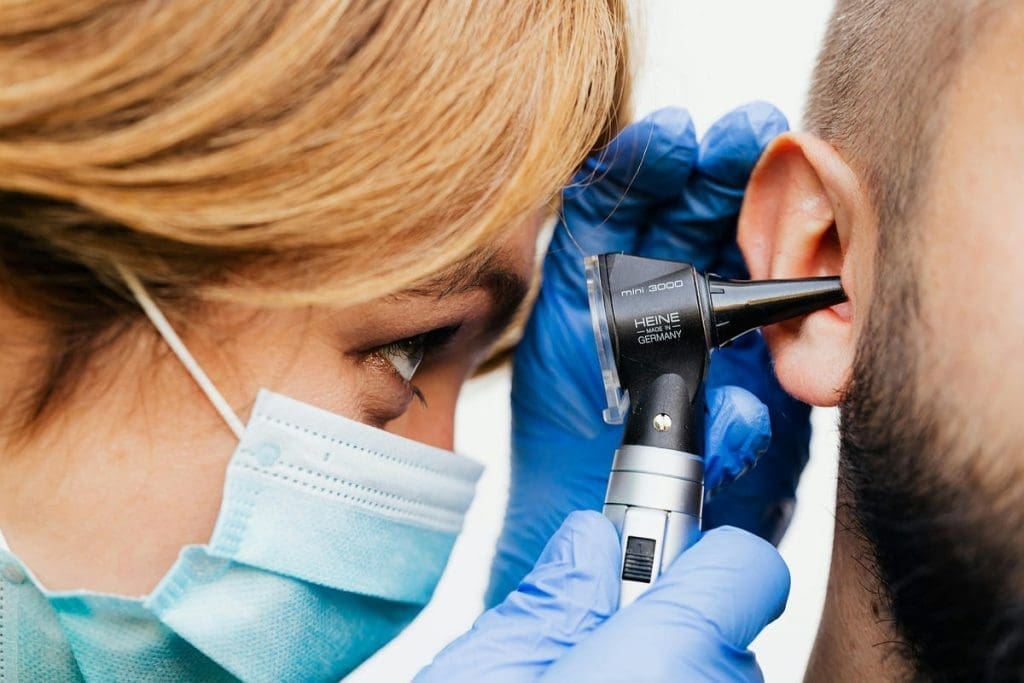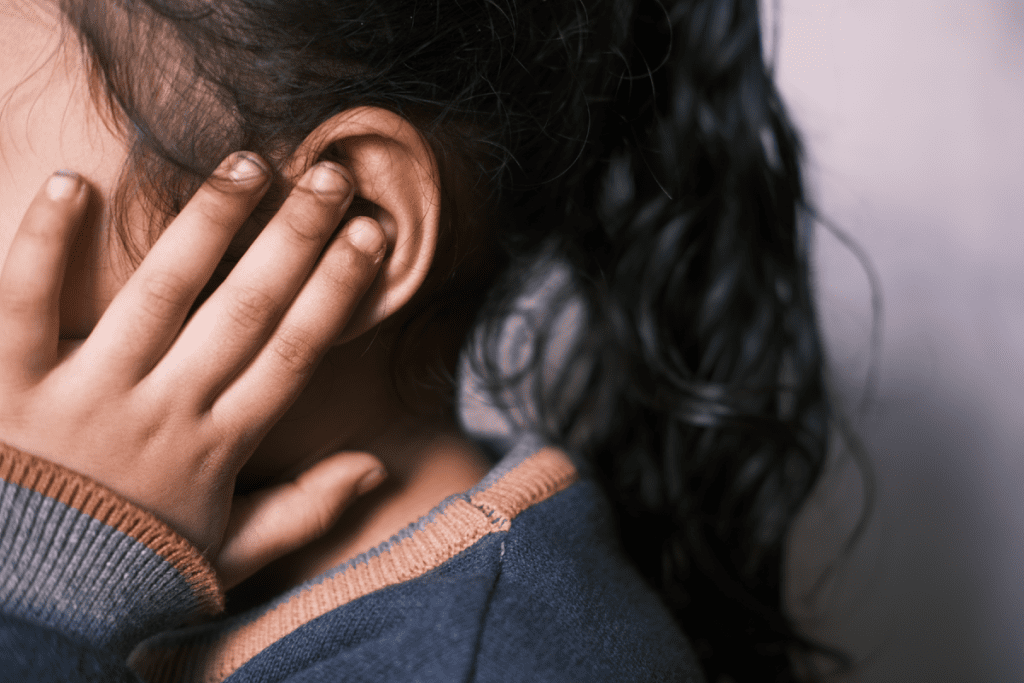Last Updated on November 14, 2025 by

Outer Ear Infection: Understanding Chondritis of the Ear
Chondritis of the ear, also called auricular chondritis, occurs when the ear cartilage becomes inflamed ” typically in the pinna, the outer visible part of the ear. This condition is often related to outer ear infections, injuries, or trauma to the cartilage, including piercings.
Research indicates that cases of chondritis and perichondritis have increased over time. Between 1990 and 1998 in England, a noticeable rise was seen, mainly linked to the growing trend of cartilage piercings among teenagers.
Recognizing the signs of an outer ear infection early is essential to prevent complications. Prompt treatment helps avoid permanent cartilage damage and ensures a faster recovery.
To understand chondritis of the ear, we need to look at the ear’s cartilage and related issues. This condition, an inflammatory one, affects the outer ear’s cartilage. It causes pain and discomfort.
The outer ear, or auricle, is made of elastic cartilage covered by a perichondrium with elastic fibres. The perichondrium is key in keeping the cartilage healthy. Chondritis happens when this balance is broken, causing cartilage inflammation.

The ear cartilage is both flexible and strong, giving the ear its shape. It’s filled with chondrocytes in a matrix of collagen and elastic fibres. Knowing the anatomy is vital for diagnosing and treating chondritis.
Chondritis and perichondritis both involve inflammation but target different parts of the ear cartilage. Chondritis affects the cartilage itself, while perichondritis targets the perichondrium, the tissue around the cartilage. Perichondritis often comes from infection, which can reach the cartilage if not treated quickly.
It’s important to tell these conditions apart for the right treatment. We’ll look at causes, symptoms, and treatments in the next sections. This will give a full understanding of these related conditions.
It’s important to know why outer ear infections happen. These infections, like chondritis, come from different things. We’ll look at these causes to understand them better.
Getting hurt in the ear can lead to infections. Transcartilaginous high ear piercing is one cause of pinna perichondritis. Sports injuries or hitting the ear can also cause infections. It’s key to prevent these and see a doctor if you have symptoms.

Infections are a big reason for outer ear infections. Pseudomonas aeruginosa often causes infections, like those from ear piercings. Bacteria can spread fast if not treated right away. Keeping clean and seeing a doctor if you get infected is important. For more info, check out this guide.
Relapsing polychondritis is an autoimmune disease that can cause chondritis. It makes cartilage in the body, including the ears, get inflamed. Knowing about this helps doctors diagnose and treat it better.
In summary, outer ear infections come from many things. These include trauma, infections, and autoimmune diseases. Knowing about these can help prevent infections.
Ear chondritis shows through clear signs and symptoms that need quick action. We’ll cover the common symptoms and when to see a doctor.
The symptoms of ear chondritis can be quite distressing. Common symptoms include pain, swelling, and redness of the ear pinna. Sometimes, it can cause an abscess, a collection of pus that needs proper treatment.
A swollen ear is a key sign of ear chondritis. The swelling might feel warm and tender. If you see these signs, watch them closely and get medical help if they get worse or don’t get better.
Get medical help if you have increasing pain, spreading redness, or if swelling affects your hearing or ear movement. Untreated chondritis can lead to severe ear deformity (Source).
See a healthcare professional if your ear changes or you have ongoing discomfort. Early treatment can greatly improve your outcome and prevent long-term damage.
Diagnosing and treating ear chondritis needs a detailed plan. Doctors use a history and physical exam to spot it. Treatment might include antibiotics or surgery for serious cases.
Doctors mainly use a clinical check-up to find ear chondritis. A detailed medical history and physical exam are key. They might also use tests like cultures or biopsies to confirm an infection or inflammation.
Antibiotics are often the first step in treating ear chondritis. If it’s caused by an autoimmune issue, like in relapsing polychondritis, doctors might use immunosuppressants. Pain relief is also important, with painkillers helping to ease discomfort.
For serious cases of ear chondritis, surgery might be needed. This could be to drain an abscess or fix damaged cartilage.
Untreated ear chondritis can cause permanent ear cartilage damage, leading to deformity. It can also lead to ongoing infections or chronic pain. Getting a diagnosis early and treating it right can avoid these problems.
As a specialist noted,
“Early intervention is critical in managing ear chondritis and preventing long-term damage.”
To prevent ear chondritis, it’s important to watch out for ear trauma and high piercings. These can cause pain and swelling in the ear.
It’s best to avoid high ear piercings and protect your ears from injury. Getting medical help quickly is key to treating the condition and avoiding serious problems.
With the right treatment, people with ear chondritis can see big improvements. Knowing the signs, like swelling, and getting medical help early is vital.
By knowing the causes and risks, we can take steps to prevent ear chondritis. This way, we can keep our ears healthy and have a positive outlook.
Chondritis of the ear is when the ear cartilage gets inflamed. This usually happens in the outer ear. It can be caused by injuries or infections.
Chondritis is when the cartilage in the ear gets inflamed. Perichondritis is when the tissue around the cartilage gets inflamed.
Outer ear infections can come from injuries or infections. High ear piercings and sports injuries are common causes. Bacterial infections, like Pseudomonas aeruginosa, are also a cause.
Symptoms include pain, swelling, redness, and warmth. If you notice these, see a doctor right away.
Doctors will do a physical exam and ask about your medical history. They might also use imaging tests or lab work to find the cause.
Treatment may include antibiotics or other medicines. In severe cases, surgery might be needed to fix damaged cartilage.
If not treated, ear chondritis can cause cartilage damage or chronic pain. Getting medical help quickly is important to avoid these problems.
To prevent it, avoid high ear piercings and be careful with ear injuries. Keeping wounds clean and practicing good hygiene can also help.
Relapsing polychondritis is an autoimmune disease that causes cartilage inflammation. It can lead to chondritis in the ears.
If you have severe ear pain or swelling, see a doctor right away. They can find the cause and treat it.
Subscribe to our e-newsletter to stay informed about the latest innovations in the world of health and exclusive offers!